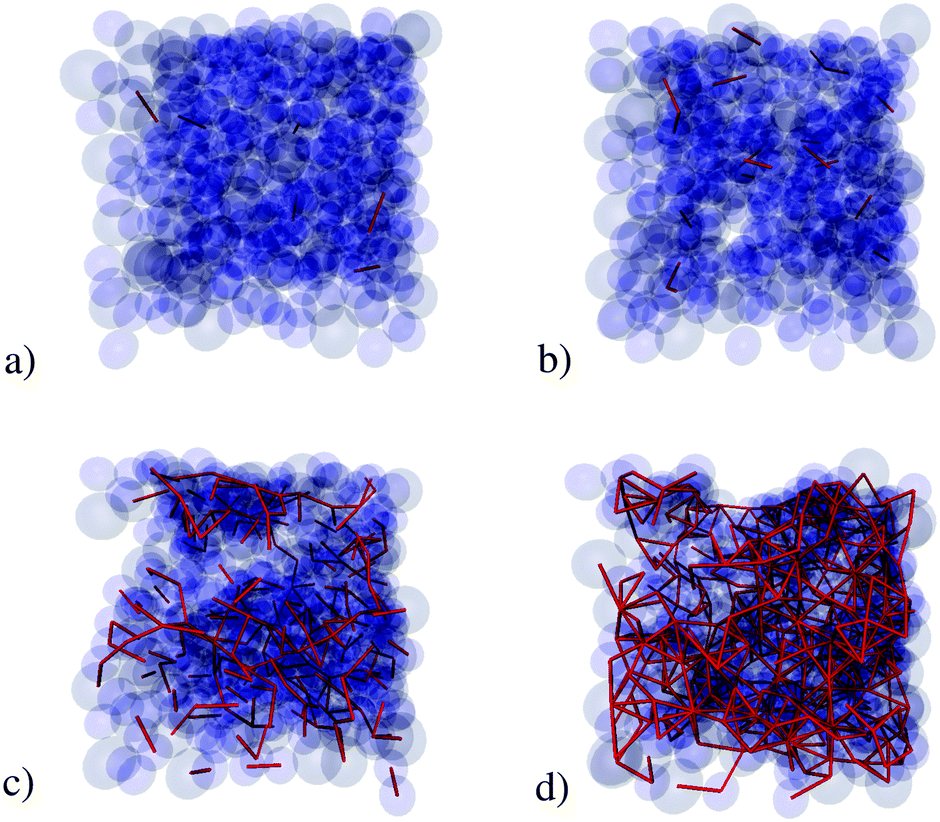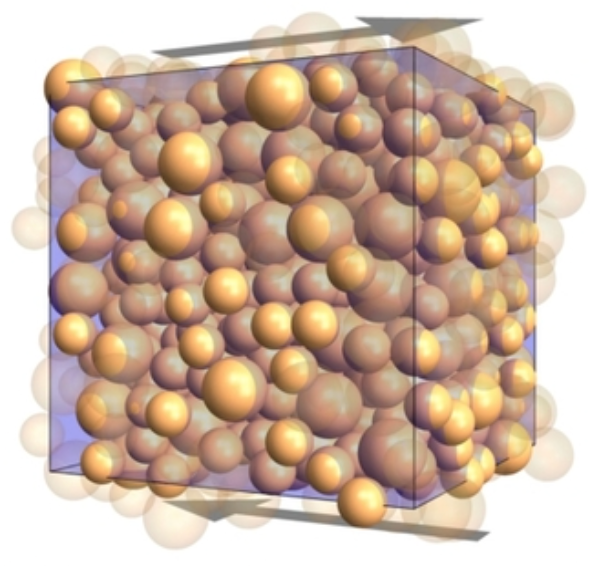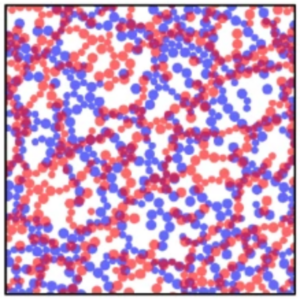Introduction
Shear thickening is a phenomenon where the viscosity of materials jumps up abruptly with shear rate. This can be very inconvenient when it occurs, for instance in dense suspensions found in a number of industrial (cement, ceramics) and geophysical (muds, sediments) settings. Despite much study, we do not have a full understanding yet of the origin of shear thickening and how it relates to the properties of such suspensions.

Figure 1: Contact network snapshots at Pe = 0.01 at ϕ = 0.5 for different attractive strengths. (a) FA = 0kT/a, (b) FA = 50kT/a. (c) FA = 200kT/a, and (d) FA = 1000kT/a. (Pedneker 2017)

Figure 2: Simulations consider a 3D system of bidisperse spheres under simple shear with Lees-Edwards periodic boundary conditions (Mari 2015)
Our Research
The objective of this project is to understand the flow and structural behavior of bi-disperse rate-dependent suspensions and how those are affected by changing the system parameters. We perform detailed particle-scale simulations over a broad range of shear stresses using a simulation model for smooth spherical particles accounting for short-range lubrication forces, frictional interaction, and repulsion between particles. Using the results of the simulations, we investigate bidispersity focusing on how particle size and particle size distribution affect the rheology of suspensions.

Figure 3: Stressed particles in the first (blue) and second (red) jammed states are imposed. Overlapping particles appear in purple. (Seto 2019)
References
- Simulation of shear thickening in attractive colloidal suspensionsS Pednekar, J Chun, JF MorrisSoft matter 13 (9), 1773-1779. 2017
- Discontinuous shear thickening in Brownian suspensions by dynamic simulationR Mari, R Seto, JF Morris, MM DennProceedings of the National Academy of Sciences 112 (50), 15326-15330. 2015
- Shear jamming and fragility in dense suspensionsR Seto, A Singh, B Chakraborty, MM Denn, JF MorrisGranular Matter 21 (3), 1-8. 2019
